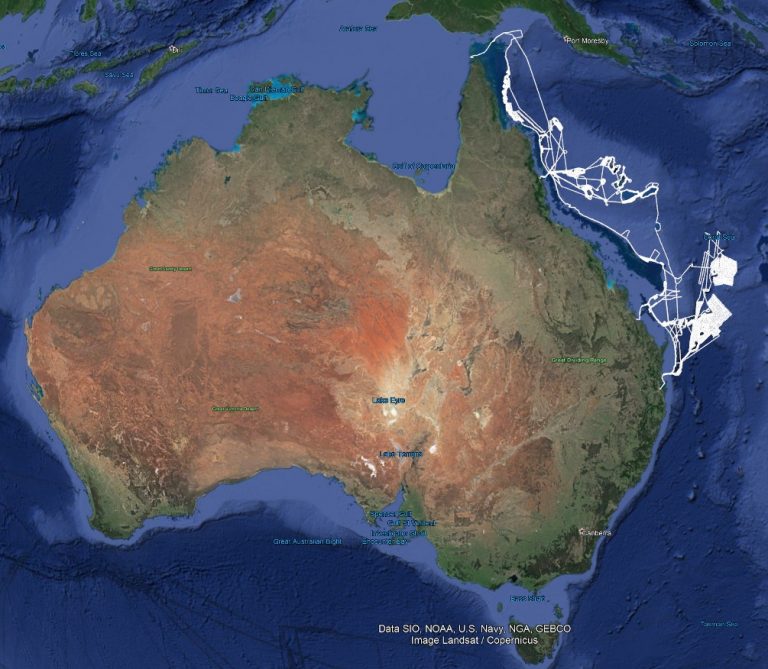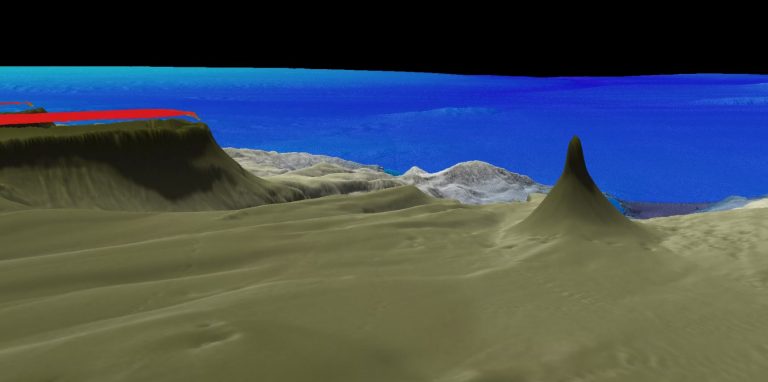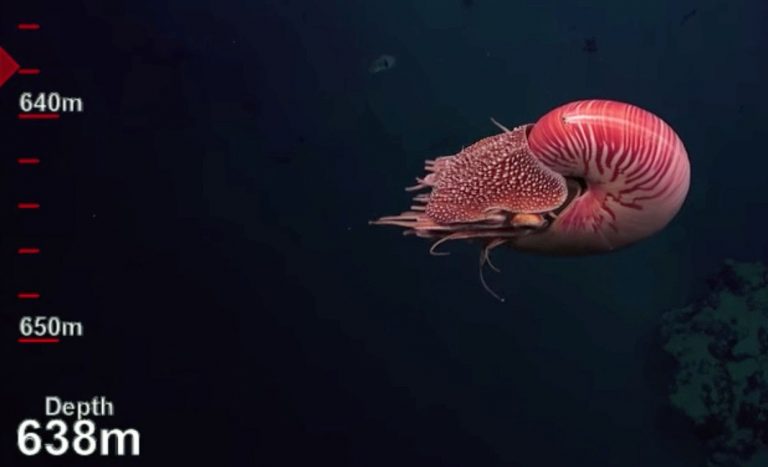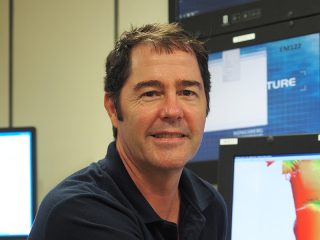The R/V Falkor has finally left Queensland waters after a full year working within the Great Barrier Reef and Coral Sea marine parks. With the ship now transiting across northern Australia towards Darwin, capital of the Northern Territory and the launchpad for the next expedition, ‘Australian Mesophotic Coral Examination,’ I can now reflect on the legacy of the Falkor’s time here.
Little did I know when the ship first arrived in Cairns in early April 2020, at the start of the COVID crisis, this would lead to my involvement in six back-to-back expeditions and the two transits into and out of Queensland— eight voyages in all. Several of these voyages transited the entire length of the Great Barrier Reef margin—a distance stretching over 2500 km long. Other expeditions reached into the furthermost reaches of the remote Coral Sea Marine Park.

The Falkor has sailed some 70 thousand-line km while in Queensland, or the equivalent of driving across Australia between Sydney and Perth about 18 times (or, if in the USA, driving between Los Angeles and New York nearly 16 times). The ship has been at sea 230 days over the past year. For a while, it was one of the few research vessels anywhere in the world to continue operations at sea when all others had shut down due to the crisis, proving that the science must continue.
And through those many days at sea, the Falkor has been continuously acquiring multibeam data with their Kongsberg deep-water EM302 or shallow-water EM710 systems—at times concurrently when depths allowed. An incredible 173 thousand square km of new map data were collected, or an area about ¾ the size of the state of Victoria and larger than the area of Florida. The latest data have revealed a cornucopia of seabed features from underwater landslides and giant debris blocks to submarine canyons and drowned reefs by the dozen, ancient shorelines, and vast dune fields.
So many exciting discoveries were made, but for me, the highlight was the 500 m-tall detached reef found during the ‘Northern depths of the Great Barrier Reef’ expedition. This became a viral media sensation, which spawned a blizzard of interview requests—a good news story against a background of mostly negative stories on the condition of the GBR. We had fully 3D mapped this reef—one of only eight similarly tall detached reefs—and then used ROV SuBastian to climb to the summit while sharing in the joy of discovery with the world through live YouTube and Facebook feeds.

It is hard to put into words the importance of the ROV SuBastian dives in contributing to the overall knowledge of the marine life and geology in the deep GBR and Coral Sea. Before the Falkor, we knew very little about the marine life existing beyond scuba diving or shallow ROV dive limits. With the 42 ROV SuBastian dives conducted—the deepest to over 2000 m—there is a step change in our understanding of deep marine life on the seafloor and in the water column.
SuBastian became our eyes, ears, and hands to search the darkness for samples of deep-water corals and sponges recovered under permit to be processed by a team of biologists from the Queensland Museum, Museum of Tropical Queensland, and further afield. High-resolution imagery captured footage of rare sharks, giant isopods, strange walking scorpionfish, fierce-looking eels, swimming sea cucumbers, and delicate glass sponges. My favourite, though, was the chambered nautilus that occasionally bobbed into view and was found on nearly every dive in the Coral Sea.

With the ROV, sampling of the softer sediments and rocks reached another level beyond the previous bucket-on-a-string or blind cores taken before the Falkor. On most dives, sediment cores were taken at the start and end of systematic transects across wide depth ranges to characterise and ground truth the seafloor. Exposed limestone rock outcrops were chipped, drilled, or cracked to capture precious samples, much as a geologist would do on land with a geology pick. These ancient rock samples will provide insight into the origins of the Great Barrier Reef and offshore coral atolls.
However, beyond the science done and raw statistics of this enormous effort, the Falkor’s year in Queensland has brought together a large group of people and built relationships and experiences that I hope will endure for many years. Across the eight voyages, 75 virtual and onboard investigators were involved. Twenty-six graduate and postgraduate students experienced life at sea on a world-class research vessel through a difficult period when such opportunities were rare.
We shared with Falkor’s crew the occasionally rough seas and strong winds and the calm of a sunburnt and magically still ocean. We shared in the wonder of turquoise shallow coral reefs, some of the largest in the world, gliding close by as we mapped the edges. We shared birthdays, video nights, karaoke, trivia competitions, and card games. We shared great food and barbeques on the upper deck or quiet, reflective moments together over a cold drink. It is hard to believe it’s finally over.
To Falkor and your magnificent crew—we wish you a very fond farewell.

